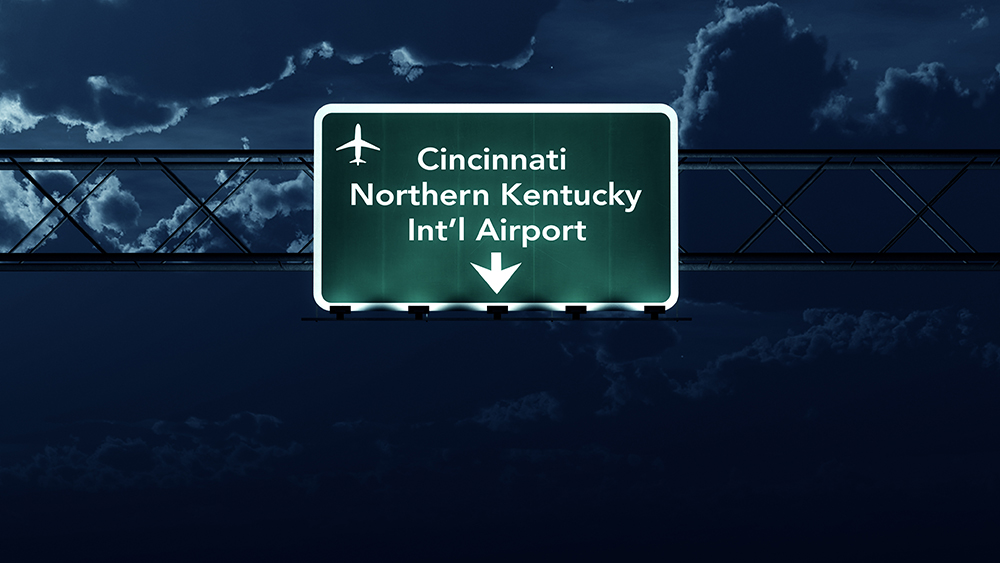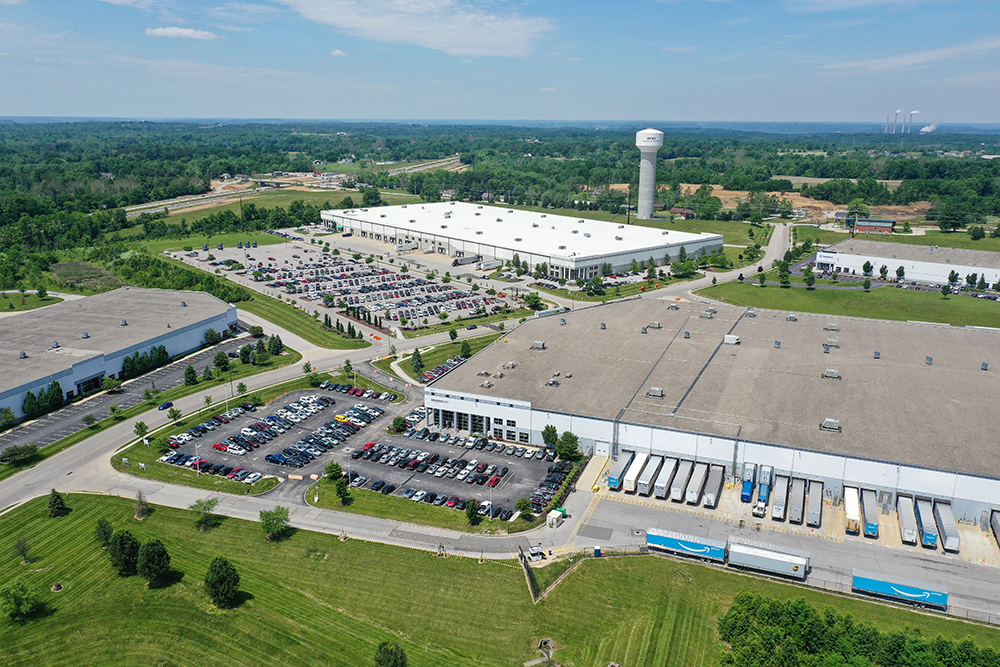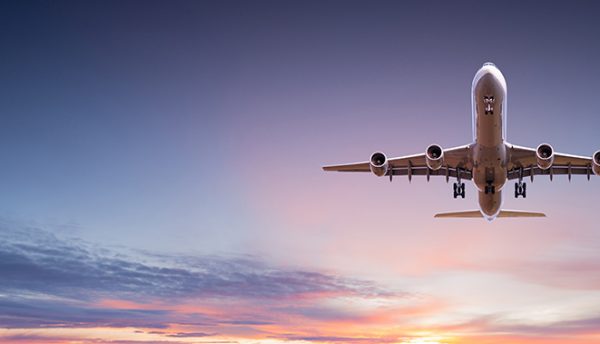With the aviation industry being one of the sectors most impacted by the COVID-19 pandemic, Brian Cobb, Chief Innovation Officer at Cincinnati/Northern Kentucky International Airport and one of the speakers at Cybersecurity in Aviation, exclusively tells us how the industry is utilising technology to put itself back on the road to recovery.

How important is the use of data to the aviation industry’s fight back against COVID-19?
Using the expression, ‘Cash is King’, then I contend like others, ‘Data is Gold’. We collectively have vast amounts of unmined data at our fingertips while generating more billions of bits of data each and every day.
Refined data through Artificial Intelligence, Deep Learning across multiple industries and generating predictive analytics from the same will continue to accelerate the pace by which we do business.
Industries and businesses who embrace data mining will learn to adapt to market cycle indicators and amply be prepared to moderate dramatic events. COVID-19 is an ideal case study.
While the transportation industry understood that a pandemic was feasible, it is fair to say that the vast majority of my global colleagues never thought it would happen in our lifetime. But here we are.
While many around the world are focused on the ‘silver bullet solution’, others are looking to what we can learn today to prevent similar spread in the future.
Imagine public venues such as malls, arenas, ports, etc. using networked solutions looking for symptomatic concerns without fear of personally identifiable biometrics. If a community trends towards risk level, could public health officials work with transportation to effectively restrict travel beyond regional limits?
Cities and countries are doing this today, but it’s on a macro-level and oftentimes well beyond the beginning of the upward trend. Some number of citizens have likely traveled by the time lockdowns are in effect.
Stopping the spread is too late. Imagine if this ‘networked approach’ were in place enabling public health and transport officials to affect lockdowns based on micro-level data and predictive analytics.
Perhaps we could have contained an epidemic before blossoming to the global pandemic we are experiencing today. Also imagine the narrative if such an approach were effective in stopping the spread and restoring economic stability. That’s an effective use of data, prediction modeling, Deep Learning, and demonstrable action to protect the industry and others like it going forward.
The thermographic gateway system you use from Fazing Labs allows you to use a real-time system of dashboard where you can monitor real-time for alerts. What data are these alerts supplying you with and how do you use it?
It’s important that we first acknowledge that detecting an abnormal core temperature is not indicative of COVID-19 as some do not exhibit an abnormally high temperature while others may have a higher core temperature beyond their control (e.g. medication side effect).
That said, we recognize that core temperature monitoring may provide insights to the community concern trending mentioned above. With Fazing Labs, we’re modeling the ability to protect the identification of the ‘target’ until such time that a reading is abnormal.
Should that occur, our intention is to use our regular CCTV capabilities to identify the individual and approach them in a respectful way. This is opposite of how airports perform security screening today where 100% of the population is processed as being a security risk until cleared.
Ideally, this approach to temperature checks provides a more humanistic, considerate and timely approach to not interrupting the flow or worse, inadvertently create queues that compromise social distancing.
In consideration that temperature is not a confirmation of COVID-19, the reasonable expectation would be for that guest to be escorted to a secondary screening using an approved rapid test method.
As the primary (temperature) and secondary (rapid test) data points are gathered, this would be mapped against the total population traveling over the same time. The result is a trend report that ideally can assist public health agencies and transportation officials discern models of concern and determination of allowing mass travel or implement moderate restrictions to stem or stop the spread.

Can you use this data for contact tracing at a later date? If so, how does this process work?
We have other systems in place that support contract tracing should that become a requirement. This is done through sensor technology currently at our security checkpoint with the intent of deploying sensors from roadway to gateway (boarding gate).
The sensor tech provides capture of mac addresses for any Bluetooth or Wi-Fi enabled device. While we don’t know who the individual is that’s carrying the device, we do know that that device travelled throughout our facilities and path that individual took while on-premise.
Our leap to leverage this data for the greater good is to provide this to independent and approved contract trace organizations (e.g. Apple, Google or similar) in the interest of data privacy concerns.
Should the individual confirm via their contract trace app, our data would enable cross comparison of their device mac address(es) against all other devices that traversed our facility over a particular period of time.
It’s important to note that the CDC has recently changed its position about how long two or more individuals need to be in close proximity to be deemed ‘in contact’. However, we also are seeing study results that suggest the SARS CoV strain can survive on some surfaces for days, possibly weeks.
If this is accurate, then we have a responsibility to be looking beyond just individuals in close proximity to a wider audience of those that may have followed the same path, touched the same surfaces or used the same amenities.
There are tremendous implications to effective cleaning and sterilization and taking adequate precautions on behalf of the entire traveling population. While that may seem daunting, it is perhaps an equal justification for why community networked solutions could and should play a larger part than what’s occurring today.
How has the data allowed you to contain the spread of disease while creating a less negative economic impact?
We can only speculate at this point given the ever-changing conditions by our global public health organizations. I do think it’s fair to suggest that we’ve used data effectively in our decision making.
One of our best use cases are the IoT (Internet of things) sensors that we placed in all of our public restrooms pre-Covid. The sensor deployment was purpose driven for better staff efficiency while providing a greater, positive impact of exceptionally clean restrooms for our customers.
Our sensors have predetermined thresholds established and actively count the number of visits in and out of each female and male restroom. As the threshold nears for a particular restroom, our nearest male or female housekeeper depending on the room type is alerted that the restroom needs servicing.
This is done through cloud-based computing and notifications sent to a wearable device (wrist watch) that each housekeeper is issued. We’ve moved well beyond the traditional ‘pen and paper note card’ of when the restroom was last serviced. Our guests are less interested in seeing someone’s initials on a piece of paper and are far more expectant of superior cleanliness. Add the COVID-19 concerns of today and our customer expectations have likely increased exponentially.
As COVID-19 began to impact our airport passenger activity, we immediately used data from the IoT restroom devices to determine which restrooms to close temporarily or for an extended period of time.
This allowed for the best, most efficient use of staff’s time vs. attempting intensive cleaning throughout all restrooms. It gave them a fighting chance to keep up with the newer expectations.
Pre-Covid, closing restrooms would have been unheard of. However, with effective signage and customer guidance, our traveling guests had a greater appreciation for why we were actively closing/opening restrooms in the interest of quality, health and safety. It’s gestures like these that will support optics and confidence building for the public to return to air travel, demonstrating in real time that aviation is acting on the health and welfare of our guests at all times going forward.

How has COVID-19 increased the use of automation in the aviation industry?
We’re seeing automation in the industry gradually increase, but I’m hesitant to point to COVID-19 as today’s driver. Much of the focus is on recovery through health measures like mentioned above.
At the same time, I would be remised in not pointing out the many thousands of our colleagues worldwide that have been displaced from their jobs temporarily or permanently. Those with ‘innovation’ in their title have been hit particularly hard as organizations retract from the future and refocus efforts on survival today.
We’re not immune but are taking an altered approach of using this lull time as the perfect opportunity to pilot autonomous capabilities. Being no stranger to autonomous options such as being the first North American airport to trial the WHILL personal EV, we’ve rushed back into the AV space with products like Segway/Ninebot’s ‘loomo’ and Piaggio Fast Forward’s ‘gita’.
Gita in particular offers a diverse set of consumer options from ageing population’s robotic carry-on concierge to product delivery gate-side (e.g. shopping/dining). Pre-Covid, the average US domestic traveler would proceed from security to their departure gate, gain their bearings, reconfirm their flight information at the appropriate gate, then would consider traveling away from their departure gate for shopping and dining experiences.
In the present day, there’s a reluctance to walk away from the gate out of concern for unnecessary movement or surface touching. This is equating to a tremendous loss of concession revenue for the foreseeable future.
The alternative is sending product to the consumer at or near their gate, either through order apps or through the traditional retail ‘impulse buy’ where a customer sees something, they normally wouldn’t purchase, but due to convenience and proximity, the purchase is made. It’s the ‘candy options at the check-out aisle’ that grocery retailers use so effectively.
Outside, we’re just completing our first phase of AV passenger and baggage/cargo transport vehicles. This has largely required robust mapping and scenario building for the software’s Artificial Intelligence and prediction modeling. We’re days away from unveil to see what we believe is the first retrofit of existing vehicle platforms to be used in AV Level 4 (no safety driver) mode.
The intended purpose is to demonstrate and offer our tenant airlines an opportunity to deploy AV in co-ordination and support of the airport. Post-Covid, we likely can anticipate an employment shortfall in some markets while others struggle with high employee turnover, loss of job knowledge due to extended absence and a myriad of other labor constraints.
The use of AV is intended to complement staff presence by performing routine jobs on their behalf, freeing aviation professionals to focus on more critically important aspects of the job such as customer-facing roles or on-aircraft support (timely parking, loading/unloading, safety checks, etc.).
How has technology been used to make the airport shopping experience safer?
Technology is and will continually be refined to support a safer experiencing in the concession verticals. It’s vitally important that we consider pre-Covid trends of less shopping and purchasing on-site and society’s rapid adoption of e-Commerce.
Some colleagues outside of the US have already experienced this trend first-hand, bracing for airports to become more window shopping-like experiences. As in see it, web search it, purchase it online and deliver it direct to the home, hotel or preferred site.
Failure by master concessions or airports to recognize and align to these types of trends will gradually result in shock and awe of rapidly decreasing revenues. Now is an opportune time to begin looking to how best to diversify our concession portfolios, perhaps support master concession organizations and similar to adapt to new business modeling, and gage what’s occurring in other similar industries that could likewise be aligned with or avoided at all costs.
Particularly with COVID-19, it’s chasing a very difficult target. Not only are consumers going directly to their departure gate as mentioned before, but those that do go back to shop or dine are likely to experience store/restaurant capacity constraints for social distancing purposes.
In some respects, we’re actively dissuading use of our amenities and in turn, driving larger losses of revenue. This is not sustainable. Mobile applications, AV options and the like just may be a silver lining.
What technologies are you looking to invest in?
Forward looking technologies that we’re actively considering are fairly broad with some far-reaching implications. While I don’t think COVID-19 concerns and applications are short lived, I do see a speedier deployment of technologies that have been used in the healthcare system for many years or even decades.
We’re likely to see deployments of HVAC air quality protections and routine air quality testing for bacterial and viral risks. Greater use applications of UV-C lighting in smaller, confined areas such as restrooms will support a marked increase in surface protections in difficult spaces.
Electrostatic sprayers have already been widely adopted, but what’s needed most is the active fluid to best envelop and protect surfaces over extended periods of time, ideally 15 days or longer.
A particular product that we’re watching closely is graphene it’s wide use in surface coatings and beyond. Graphene mixed with other natural stone has all the chemical makeup of barbed shredders for viruses or bacterium that come in contact.
Graphene also offers durability, conductivity, and temperature regulation properties among many other industrial applications. A similar natural composition of graphene is being used in textiles as well. This provides us a route to employee health and safety through wearable tech not typically known or widely used today.
And, of course, transport technologies are high are on our list. While we’re successfully developing AV advancements, we’re also keen to leverage unmanned aerial technology for movement of heavy-lift cargo between our cargo hub, outlying staging sites, and longer-term, between markets that require greater frequency but are challenged by saturated airspace.
Based on the most recent news of ground-based transport, we also must be active participants/observers for how production modeling of hyperloop technologies can complement, not compete, against aviation whereby airports limited to air access alone take the position of a multimodal transport site. Loss of an air route may be subsequently replaced with a hyperloop route, supporting the airport in retaining transport revenue options.







